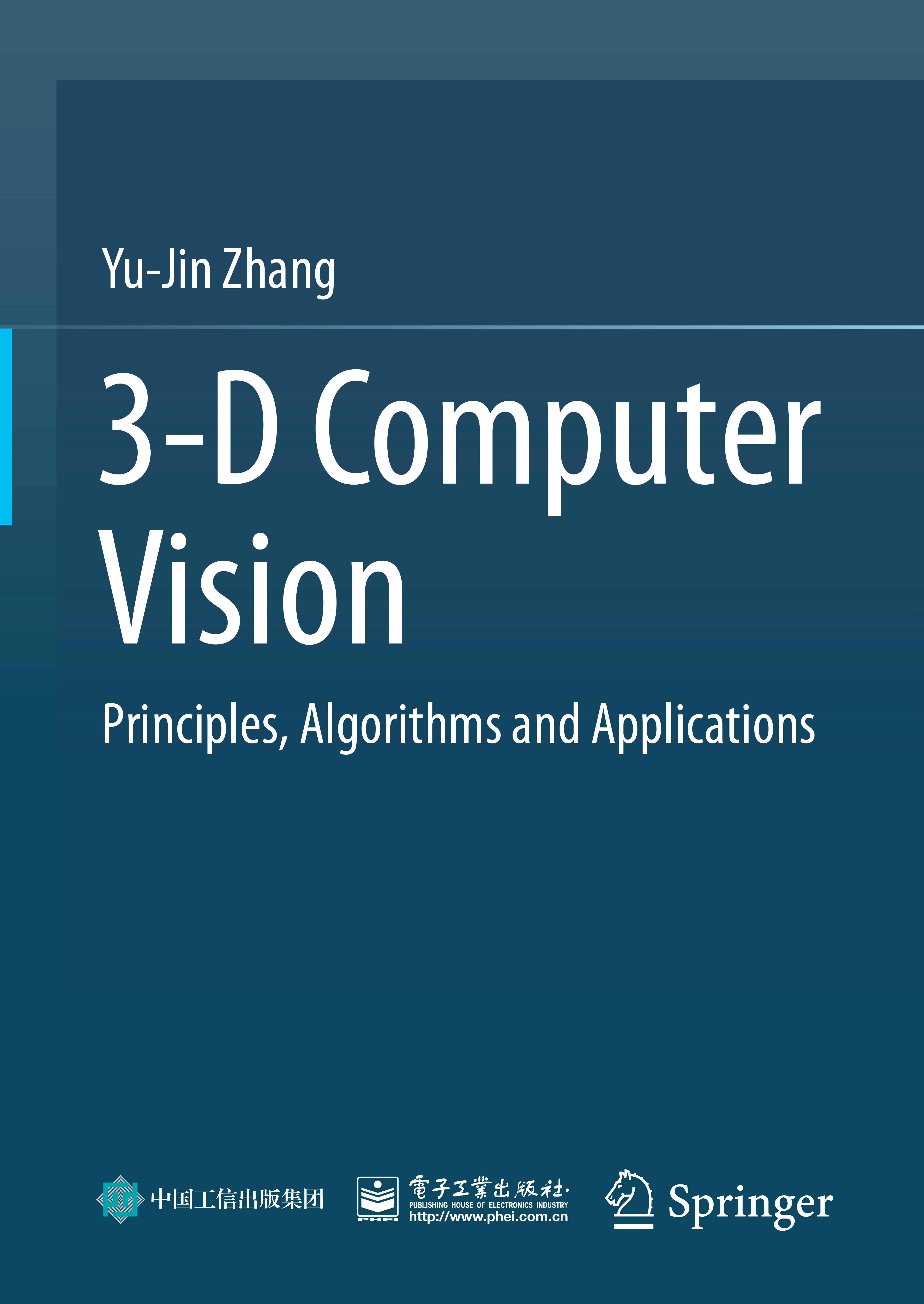|
3-D Computer Vision: Principles, Algorithms and Applications Yu-Jin ZHANG Springer Nature£¬2023 |
|
|
|
ISBN: 978-981-19-7579-0 (hardcover) |
|
Preface |
This book is a specialized textbook that introduces the basic principles, typical methods, and practical techniques of 3-D computer vision. It can provide an advanced/second course service of computer vision for graduate students of related majors in higher engineering colleges and universities, after studying 2D Computer Vision: Principles, Algorithms and Applications. This book mainly covers the higher level of computer vision from the selection of materials. This book is self-contained, mainly for information majors, but also takes into account learners of different professional backgrounds, and also considers the needs of self-study readers. After learning the fundamental content of computer vision in this book, readers can carry out scientific research and solve more and even difficult specific problems in practical applications. This book pays more attention to practicality in writing. Considering that computer vision technology has been involved in many professional fields in recent years, but many working people are not specialized in computer vision technology, this book does not emphasize the theoretical system too much, minimizes the formula derivation, and focuses on commonly used techniques. This book has many sample questions and uses intuitive explanation to help readers understand abstract concepts. A subject index list is given at the end of the book, and those corresponding terms are marked in bold in the text. This book provides a large number of self-test questions (including hints and answers). In terms of purpose: on the one hand, it is convenient for self-study to judge whether they have mastered the key content; on the other hand, it is also convenient for teachers to carry out on line teaching and strengthen teacher-student interaction during lectures. The types of questions are multiple-choice questions, which can be easily judged by a computer. In terms of content, many questions express the basic concepts in a different way, supplementing the text, so that learners can deepen their understanding. Some questions list descriptions that are similar but not the same, or even have opposite meanings. Through dialectical thinking of pros and cons, learners can also deeply understand the essence. The hints have been provided for all self-test questions, allowing readers to obtain more information to further identify the meaning of the questions. At the same time, each question can be said to be divided into two levels in thi sway. Readers can complete the self-test after reading the hints to show that they basically understand it, and to complete the self-test without looking at the hints indicates that they have an even better grasp. From the structure of this book, there are 12 chapters in total, plus one appendix, answers to self-test questions, and subject index. Under these 15 first-level headings, there are a total of 103 second-levelheadings (sections), and there are 141 third-level headings (subsections) underneath. The book has a total of about 500,000 words (including pictures, drawings, tables, formulas, etc.) and a total of (numbered) 228 figures, 22 tables, and 566 formulas. In order to facilitate teaching and learning, this book provides a total of 68 examples of various types and 157 self-test questions (all with hints and answers). Inaddition, there are a list of more than 100 directly related references and a list of more than 500 subject terms for indexing, at the end of the book. This book can consider three aspects from the knowledge requirements of the prerequisite courses: (1)Mathematics: including linear algebra and matrix theory, as well as basic knowledge about statistics, probability theory, and random modeling; (2)Computer science: including the mastery of computer software technology, the understanding of computer structure system, and the application of computer programming methods; (3)Electronics: On the one hand, the characteristics and principles of electronic equipment; on the other hand, circuit design and other content. In addition, the book 2D Computer Vision: Principles, Algorithms and Applications can be counted as the discipline prerequisite of this book. Thanks to the editors of the publisher for carefully composing the manuscript, seriously reviewing,and attentively modifying. Finally, the author thanks his wife Yun HE and daughter Heming ZHANG for their understanding and support in all aspects. |
|
Contents |
(More in "Detailed contents")
|
Back to Books ·µ»ØÊé¼® |
|---|---|
